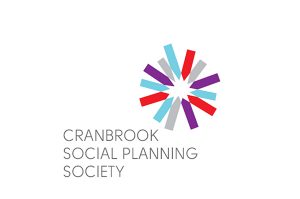Home »

Poverty and government – three different levels
By Kerri Wall
As most people know, British Columbia is our country’s last province or territory without a poverty reduction plan or the commitment to develop one.
 However, one big step forward in this direction happened since the last federal election – the government of Canada is now officially looking at poverty reduction at the national level. To begin, a special parliamentary committee is reviewing some current poverty reduction strategies from within Canada, as well as plans from Ireland and the UK, and they are determining such things as ‘how do we define poverty?’ and ‘how do we measure it?’
However, one big step forward in this direction happened since the last federal election – the government of Canada is now officially looking at poverty reduction at the national level. To begin, a special parliamentary committee is reviewing some current poverty reduction strategies from within Canada, as well as plans from Ireland and the UK, and they are determining such things as ‘how do we define poverty?’ and ‘how do we measure it?’
This is new for Canada. Official responsibilities of our federal government include national defense, criminal law, postal service, trade regulations, citizenship, transportation, Indian affairs, the census, and money and banking. What level of government is responsible for handling poverty? Actually, there has never been one level of government with this jurisdiction. This is because the mechanisms that impact poverty, like housing, income, education, employment, neighbourhood design, and early childhood experiences, are not solely overseen by any one level of government.
Provincial government responsibilities include property and civil rights, administration of justice, natural resources and the environment, education, health care, and social development (welfare).
Municipal governments operate fully at the discretion of provincial and territorial governments. In her recent book “Surviving City Hall,” former city councillor Donna MacDonald from Nelson refers to the federal government as Papa Bear, the province as Mama Bear, and municipalities as their children, who essentially must do the bidding of Mama and Papa. Municipal government responsibilities include water, sewage, waste collection, public transit, land use planning, libraries, emergency services, animal control, and economic development.
Who specifically looks at housing? What level of government overlooks family income? What about access to healthy and affordable food? Childcare? Healthy early childhood development? Most elements of these broad poverty-related issues are left to the marketplace.
If we were to look at the issue of housing for example, any solutions will have to be systems-oriented because of the multiple spheres of influence and impact. A recent report from the National Housing Collaborative says, “Housing is a shared responsibility that requires coordinated efforts from multiple partners, including federal, provincial, Indigenous and local governments, as well as not-for-profit providers, the private sector, individuals, and households.”
Making sure there’s enough affordable housing in B.C. is a joint responsibility across all levels of government. Local governments like the City of Cranbrook can adopt growth strategies and plans that encourage affordable housing units and nurture a regulatory environment that’s “housing-friendly” by allowing secondary suites or promoting increased density and housing options. Local governments can also do such things as provide pre-zoned land for development and higher-density transit and offer property tax incentives and targeted reductions to build or renovate affordable housing.
The provincial government has the ability to partner with local governments, non-profit agencies and housing stakeholders. They can help fund social housing programs and projects. Additionally, they oversee and have the power to amend landlord-tenant regulations.
Federal government can partner with the provincial government and invest in social housing too. This is something they did much more in the past, and it looks as if they will be making more investments in the near future.
The Canada of today needs a poverty reduction plan and a commitment. Hopefully British Columbia will follow suit.
If you would like more information about our Society, visit the Cranbrook Social Planning Society Facebook page www.facebook.com/CranbrookSocialPlanning/ where meeting details and activities will be posted.
The February meeting is scheduled for Monday, February 20 starting at 1 p.m. at the Salvation Army. Join us to learn of community services, activities and ways you may wish to be involved.
– Kerri Wall is Community Health Facilitator, Interior Health;
For the Cranbrook Poverty Reduction Committee and Cranbrook Social Planning Society







